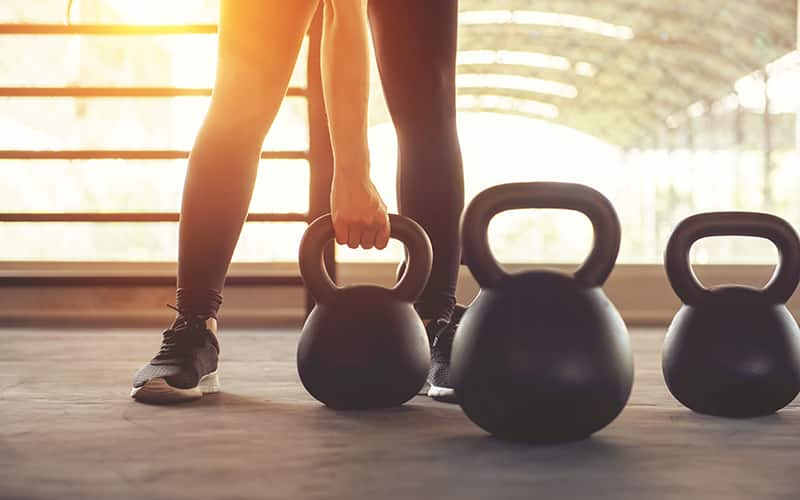Strength Training Exercises for Triathletes
by Marty Gaal

Strength training in the overall sense of strength and conditioning training helps all athletes maintain or improve coordination, muscle tone, body composition, maximal power and muscular endurance.
It is also anti-aging therapy you can get for free and can help prevent or mitigate injuries.
Strength training can help you keep your trunk and pelvis (core) in line in the final miles of a race, help you find a sprint to the finish and help you eke out a few more watts on the bike leg of an IRONMAN. While triathlon training is mostly an aerobic discipline, including work on anaerobic ability (sprints and lactate threshold work) and strength and conditioning (weights, Pilates, yoga, core work, plyometrics) help round out the program.
Generally speaking, two or three times a week doing light to moderate resistance of six to 10 total exercises at 10-20 reps and two or three sets per exercise, is a safe place to start. Athletes with no or little prior experience should hire a trainer for at least a few sessions.
For beginners, find an easy weight and add just a little more to it. Advanced athletes will approach strength training just like they do their aerobic training: with a methodical seasonal plan. So the resistance and effort will vary depending on the time of the season.
An overall approach is to do six to eight weeks of lighter resistance and higher reps, but not to failure, then four to six weeks of intermediate resistance and reps, followed by four to six weeks of lower reps and higher resistance. After this cycle, then move into a maintenance program of medium resistance on the higher rep side. Everyone responds to strength training stimuli differently, so your mileage may vary. The above is a loose guide.
Basically, when a particular routine has become easy, athletes need to change it.
Some of the important exercises include:
- Squats, lunges or variations of these
- Deadlifts
- Planks, exercise ball twists, side chops, Turkish get-ups, or any abdominal/oblique variation on core work
- Pullups or rows
- Step ups or box jumps
- Cable-optional side leg raises and pulls (adductor and abductor resistance)
- Bridges and bird dog
- Calf raises
- The occasional chest press or bicep curl for variety + balance
Athletes should include several main exercises that involve most or all of the body (closed chain exercises). For example, a weighted squat with the bar requires the athlete to balance and engage the core while lifting, while a machine press eliminates the balance aspect. There are good reasons to use the press like rehab, back issues, etc. Just be aware of the balance and core engagement aspect.
Marty Gaal, CSCS, is the co-owner and head coach for One Step Beyond. He is a certified USA Triathlon coach. He likes to move the weights around occasionally.
The views expressed in this article are the opinion of the author and not necessarily the practices of USA Triathlon. Before starting any new diet or exercise program, you should check with your physician and/or coach.
